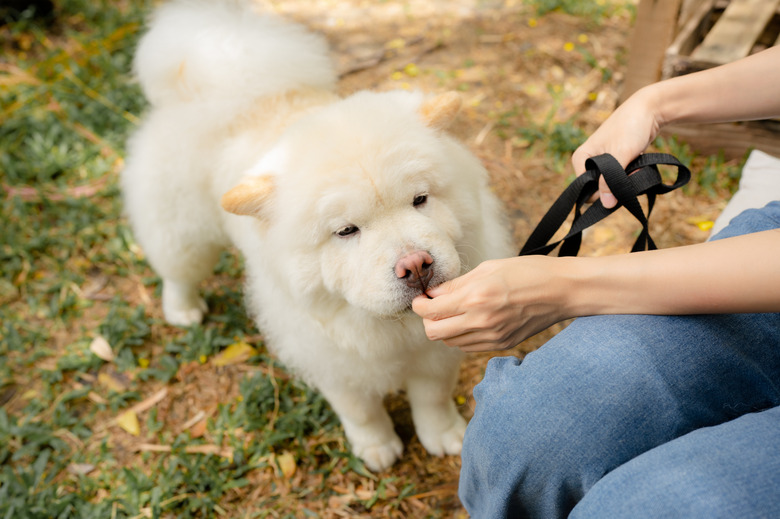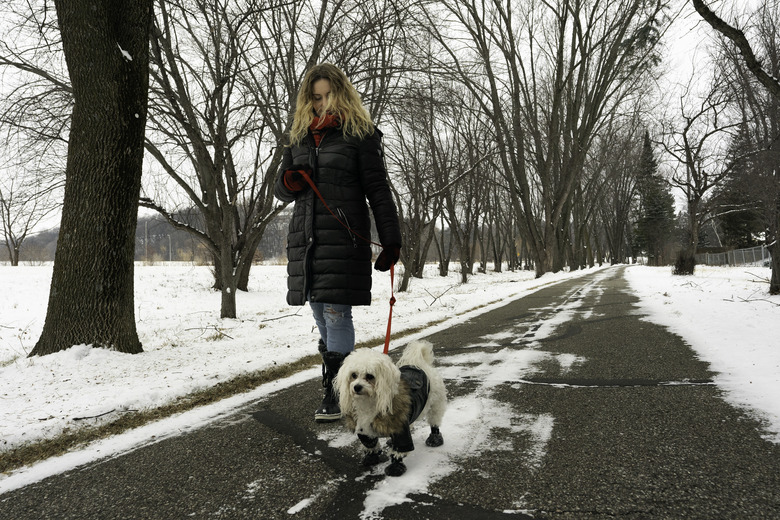Sensitive Paws In Dogs
Some dogs don't like to have their feet touched, but any sensitivity or pain associated with a dog's paws indicates something is wrong. Sensitive paws can affect a dog's well-being as much as any illness or disease. A pet parent who cares about their dog's health should pay close attention to their paws and seek veterinary care if something seems amiss. Knowing the causes of sensitive paws in dogs can help parents practice good paw protection and care. Additionally, understanding conditions and injuries that can affect a dog's feet can enable people to quickly and safely help their pets if problems occur.
Why are dog's paws so sensitive?
Why are dog's paws so sensitive?
Many dogs are naturally shy and careful about their paws, partly because dogs' paws are one of the most crucial parts of a dog's body, essential for mobility and defense. Some experts posit this is one reason dogs may be instinctually protective of their paws. Additionally, there are many nerve endings on dog paw pads, similar to the soles of a human foot. As a result, touching a dog's feet might cause them to pull back abruptly. However, if a dog appears to be experiencing an abnormal degree of paw sensitivity or pain, it is a signal that something isn't right.
Is it normal for a dog's paws to be sensitive?
Is it normal for a dog's paws to be sensitive?
For some dogs, it's normal to be sensitive or reluctant to having their paws touched, but showing discomfort or pain is not. You must gently handle your dog's paws every day to gain the dog's trust and allow you to perform paw care, including nail trims and moisturizing. This will also allow you to perform first aid and detect medical problems. Knowledge about a dog's feet is useless unless the dog allows their paws to be handled and inspected.
Check your dog's paw pads for injury
Check your dog's paw pads for injury
Check your dog's paw pads for scrapes, cuts from sharp objects, or damage from walking on rough surfaces or walking on freezing surfaces or surfaces with ice-melting chemicals. Feel each of the paw pads and between the pads and the nail bed. Feel each of the paw pads and between the pads. Gently squeeze the pads and gently squeeze each paw individually. Also, check the dog's nails and between the toes, as grass seeds and foreign bodies can embed there and become infected. Moist dermatitis (reddened, infected skin) can develop in this area due to allergies and other skin conditions. Pay attention when your pet runs and walks as well, as limping and tentative movements can indicate paw sensitivity in dogs.
If a paw pad or any part of a paw is sensitive for some reason, the dog may let you know by whining or yelping. They may also snap or growl if you handle a painful area. These are self-protective mechanisms to alert you that something is wrong. Some dogs hide their pain well, and may not show obvious signs. Watch for more subtle indications, like more rapid breathing when you handle a certain area or a desire to move away. Keep yourself safe and if your dog appears to be in pain or injured, take them to a veterinarian for a proper consultation and assessment.
What causes sensitive paws in dogs?
What causes sensitive paws in dogs?
Several factors can cause a pup's paws to become sensitive, painful, and injured. Common causes include walking on hot surfaces, such as blacktop; walking or running too often on hard surfaces, such as cement; unclipped hair between a paw's pads that snags burs and other annoying and painful foreign objects; and untrimmed nails. Cold weather, snow, and ice can dry out paw pads and cause cracks and frostbite.
Preventing sensitive paws in dogs
Preventing sensitive paws in dogs
A pet parent can do much to keep a dog's paws healthy. For one, test blacktop with your hand on hot days and see that your dog exercises in a park or on a lawn rather than on a sidewalk. If a pavement is too hot for the palm of your hand after 15 seconds of contact, it's too hot for your dog to walk on. Hot pavement can cause severe, painful burns and blisters on the footpads.
Avoid exposure to de-icing salt, which can irritate paws and cause cracking or abrasions and use a moisturizing paw balm after dog walks in cold weather. You can also use dog boots or booties to protect the dog's feet in cold weather. Also, regularly trim your dog's toenails and routinely check your dog's paws to see if the hair has grown too long or if there are burs, splinters, or foreign objects embedded there.
What should I do if my dog's paws are sensitive?
What should I do if my dog's paws are sensitive?
Your DVM (veterinarian) should be consulted whenever you are concerned for your dog's health. This includes even basic tasks, such as nail trimming. Your veterinary team can teach you about proper paw care, including how to do nail trims that are atraumatic for your dog. If you believe that your dog has sustained a serious injury to their paw, contact your veterinarian at once.
The bottom line
The bottom line
Dogs' paws have many nerve endings. This natural "sensitivity" helps them navigate their environments, acquire food, and play. However, any level of pain or discomfort signals that something is wrong and requires veterinary care. Regularly inspect your dog's paws, including their paw pads and toenails; keep them off hot pavement and away from de-icing salt; and use moisturizing balms in cold weather. If your dogs get sensitive feet or have a paw injury, take them to a veterinarian for assessment and treatment.


